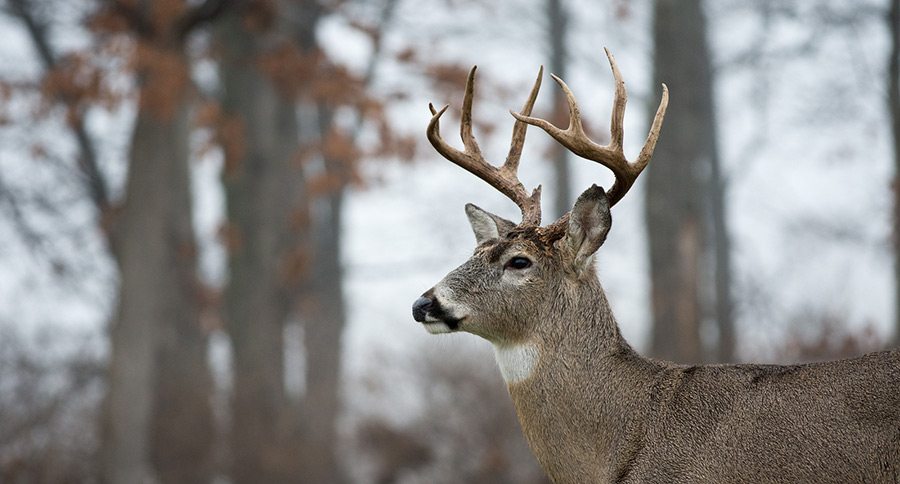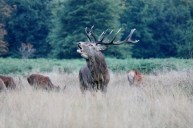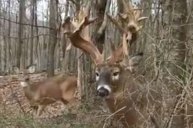Here are the ins and outs of one of the most effective deer calls: the grunt tube.
A grunt tube is a deadly accessory on any whitetail hunt. A buck heading in the wrong direction will often do an about face and come into bow range.
However, use it wrong and you may have just sent that buck and any other deer into the next county.
Here's how to hopefully avoid that happening to you.
The "How"
Blow into it, stupid.
Just kidding, there are several different vocalizations that you can make with a grunt tube that have different meanings to a deer. We'll walk you through them.
The first and most used grunt is a tending grunt. This call is made when a buck is trying to get lucky with a doe, making it one of the softer and least aggressive sounds.
To make this sound cup the end of the call and give a series of short blows opening your hand at the end. Three of these grunts seems to be the most common number.
Another effective grunt is the hail grunt. This is similar to the tending grunt but more drawn out. Instead of the rapid series of grunts in the tending grunts each individual grunt should last around 2 to 3 seconds.
Only hit the call twice and adjust the duration of the calls.
The "When"

Just because you can, doesn't mean you should. Knowing when to use a grunt tube and when not to is even more important than knowing how to.
First, if you're staring down a young buck that you would like to shoot (there is nothing wrong with meat in the freezer), don't start grunting at it. You are more likely to scare a young deer with a grunt than attract it. However, if there is a mature buck off in the distance, you can feel free to strike up a few hail grunts to say hello.
Once you have a deer's attention from a hail grunt or have a buck filtering around fairly close, seal the deal with a tending grunt. Let the buck know that there is a hot doe close by that is about to be bred.
Watch the deer's body language for his ears to fold back and get ready; if he doesn't react, wait it out. Mature deer didn't grow old by jumping in with guns blazing. He will probably try to circle downwind and figure out who you are.
What happens when you don't see deer? You can still grunt. Every 30 minutes send a blind call out like you're turkey hunting, with a few soft hail grunts.
Be mindful of the time of year before you start blasting on a tube. Just before the rut and post rut have been the most effective times to call a deer. If you know when the rut is in your hunting area, wait for a week before to get out your grunt tube.
In Michigan, the peak of rutting activity is in November, so that means the last week to week and a half of October, the grunt tube stays around my neck.
NEXT: WHAT DETERMINES A BUCK'S ANTLER COLOR?
https://rumble.com/embed/u7gve.v3v4j9/




